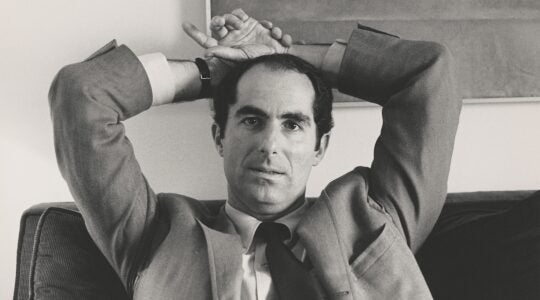There was no community-wide Jewish protest rally near the United Nations this year on the day Iranian President Ahmadinejad addressed the General Assembly. And that’s not necessarily a bad thing.
In part, there was no public demonstration Sept. 23, when Ahmadinejad was scheduled to deliver his annual diatribe against Israel, because it was the first day of Sukkot. And in part, it may well be because the organizers of the rally for the past three years recognize that it was becoming a bit of an embarrassment.
Each year on this occasion, dozens of prominent government leaders and human rights advocates from all segments of the New York community offered passionate speeches about the need to speak out against an international leader who calls for the destruction of the Jewish state. But they were addressing a couple of thousand people, consisting of diehard supporters for Israel, with lots of yarmulkes in evidence. And the numbers were bolstered greatly by the presence of Jewish day school students bused in for the event, many of whom were enjoying reuniting with friends from school and summer camp, and paying little attention to the folks on the podium.
This year, the frustrated organizers wisely deployed the time, energy and funds that would have would have gone into the rally and invested them in what they are calling “virtual advocacy.”
The coalition, which includes a number of inter-ethnic and multicultural organizations and is led by the Jewish Community Relations Council with support from UJA-Federation of New York, has launched a site called Iran180 (www.iran180.org), urging people to click on and sign a declaration saying “yes” to human rights and “no” to nuclear rights for Iran.
“Not every issue lends itself to a street demonstration,” says Michael Miller, executive vice president and CEO of the JCRC. “When there is sufficient reason, precedent and motivation, it works. But when it might not work, we look for alternatives.
“In this case we had a three-year track record” of staging a protest rally when Ahmadinejad came to address the UN General Assembly. “But it’s very difficult in the fourth year to get people to take to the streets again.”
He noted that “this is not the Soviet Jewry movement, but it should be,” asserting that the Iranian nuclear threat should be viewed not just as a cause for concern for Israel and Jews, but for all Americans and the Western world.
Recognizing the impact of the technological revolution, the coalition is asking people to take action without leaving home — not something available during the Soviet Jewry movement’s heyday of the 1970s and ‘80s, Miller pointed out.
Iran180’s message is universal, and at a press conference this week, the coalition aired its demands that Iran make a 180-degree reversal on its policies regarding the pursuit of nuclear weapons, treatment of religious minorities, ethnic groups, women, etc.
By Monday afternoon, more than 16,000 people had signed on.
Miller suggested that this trend of virtual advocacy likely would become more prevalent in the future. But he hastened to add that the group still plans to sponsor the annual Salute to Israel Parade in the spring. Hopefully, it will be able to convince a larger and wider circle of people to leave their computers for a few hours and participate.
For now, there is no excuse for any reasoning person not to sign on to Iran180, and speak out, if only electronically, in favor of a more democratic, non-nuclear armed Iran.
The New York Jewish Week brings you the stories behind the headlines, keeping you connected to Jewish life in New York. Help sustain the reporting you trust by donating today.




